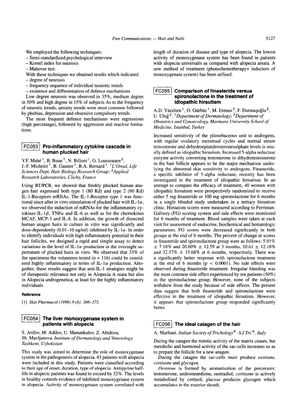Comparison of Finasteride Versus Spironolactone in the Treatment of Idiopathic Hirsutism

TLDR Spironolactone is more effective than finasteride in treating excessive hair growth in women.
In a study conducted 26 years ago, 40 women with idiopathic hirsutism were randomized to receive either 5 mg of finasteride or 100 mg of spironolactone for 6 months in a single-blinded trial. The efficacy of the treatments was measured using the Ferriman-Gallwey (FG) scoring system, and blood samples were taken to assess endocrine, biochemical, and hematologic parameters. Both treatments significantly reduced FG scores over the 6-month period, but the spironolactone group showed a significantly better response with a 32.57% ± 15.68% reduction at 6 months compared to a 10.61% ± 12.18% reduction in the finasteride group (p < 0.0001). No side effects were observed with finasteride, while irregular bleeding was the most common side effect in the spironolactone group, affecting 50% of the patients. Despite this, no participants withdrew due to side effects. The study concluded that both finasteride and spironolactone are effective in treating idiopathic hirsutism, with spironolactone being significantly more effective.

